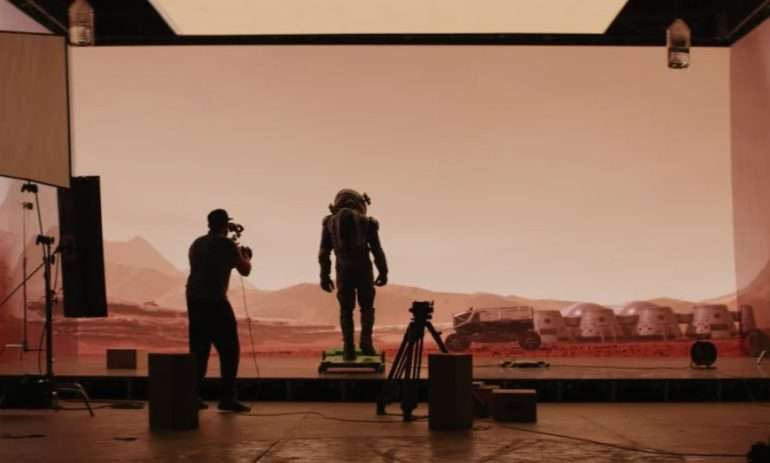The ringed giant, Saturn, just got a whole lot more crowded! Scientists have recently announced the discovery of a staggering twenty new moons orbiting the planet, bringing Saturn’s total moon count to a whopping 146, surpassing Jupiter as the solar system’s moon king. This exciting discovery provides a unique opportunity for the public to engage with space exploration as the Carnegie Institution for Science is holding a contest allowing you to help name these newly found celestial bodies. Imagine, your suggestion could be etched into astronomical history forever, associating your chosen moniker with one of these brand new moons.
The Discovery and its Significance
These new moons were detected using the “shift and stack” method, which involves layering multiple images taken by telescopes to reveal fainter objects that would otherwise be lost in the noise. This technique allows astronomers to identify smaller, previously unseen objects orbiting distant planets. The discovery is significant for several reasons:
- It provides further insight into the formation and evolution of Saturn’s ring system.
- It allows scientists to better understand the dynamics of planetary systems.
- It offers clues about the processes that shape the outer solar system.
Understanding the Saturnian System
Saturn’s system is complex and fascinating. The planet’s iconic rings are composed of countless particles of ice and rock, ranging in size from dust grains to small houses. The moons orbiting Saturn interact with the rings in various ways, shaping their structure and influencing their dynamics. Some moons, known as “shepherd moons,” orbit near the edges of the rings and help to keep them defined; Others create gaps and ripples within the rings.
How You Can Participate in Naming a Moon
The Carnegie Institution for Science is offering a chance for the public to submit names for these newly discovered Saturnian moons. The naming contest rules are fairly straightforward:
- Names must be drawn from Norse, Gallic, or Inuit mythology, following the established naming conventions for Saturn’s moons.
- Names must be no more than long.
- Names must be non-offensive.
- Names must not be too similar to existing names of solar system objects.
This is a fantastic opportunity to contribute to our understanding and exploration of the cosmos. Imagine the thrill of knowing you helped give a name to a celestial body orbiting one of the most beautiful planets in our solar system!
Looking Ahead
The discovery of these 20 new moons around Saturn is just the beginning. As technology advances, we can expect to find even more hidden objects in our solar system and beyond. These discoveries will continue to challenge our understanding of planetary formation and evolution. The quest to explore and understand our universe is an ongoing journey, and the potential rewards are immeasurable. The chance to name one of these new discoveries is a wonderful one, and you can truly make your mark on the future by contributing to the naming of these moons.
Tips for Submitting the Perfect Name
Ready to embark on your celestial naming adventure? Here are some helpful tips to increase your chances of success and ensure your submission stands out:
- Dive Deep into Mythology: Don’t just skim the surface of Norse, Gallic, or Inuit mythology. Explore lesser-known figures and stories. The more unique and relevant your choice, the better.
- Consider the Moon’s Characteristics: While we don’t have detailed images of these moons yet, think about what we do know – their distance from Saturn, their size (estimated), and their orbital characteristics. Can you find a mythological figure whose story aligns with these facts?
- Check for Existing Names: Before submitting, thoroughly research existing names of asteroids, moons, and other celestial objects. Avoid duplicates or names that are too similar. The Minor Planet Center database is an excellent resource.
- Keep it Concise and Memorable: A shorter, punchier name is more likely to be remembered and adopted. Aim for something that rolls off the tongue and is easy to spell and pronounce.
- Think About the Future: Imagine scientists referring to “Moon X” by your chosen name for years to come. Will it still resonate and be relevant? Choose a name that has staying power.
Potential Pitfalls to Avoid
While the naming contest is a fun and creative endeavor, it’s important to be aware of potential pitfalls that could lead to your submission being rejected:
- Using Modern Names: Remember, the names must come from mythology. Avoid using modern names of people, places, or things.
- Submitting Inappropriate Names: This should be obvious, but ensure your submission is respectful and appropriate for a scientific context.
- Copyrighted Material: Don’t use names that are protected by copyright or trademark.
- Ignoring the Rules: Read the contest rules carefully and ensure you adhere to all requirements. Failure to do so will likely result in disqualification.
Why Participate? The Ripple Effect of Your Contribution
Participating in this naming contest isn’t just about having your name associated with a moon. It’s about contributing to the collective human endeavor of exploring and understanding our universe. It’s about inspiring future generations of scientists, engineers, and space explorers. It’s about fostering a sense of wonder and curiosity about the cosmos.
Even if your name isn’t ultimately chosen, the act of researching, brainstorming, and submitting a suggestion connects you to a larger narrative of scientific discovery. You become a part of the story of Saturn, its rings, and its moons. You contribute to the ongoing quest to unravel the mysteries of the solar system and beyond. So, take a chance, unleash your creativity, and submit your name. You might just help write the next chapter in the story of Saturn’s moons.
Embrace the Challenge: Crafting a Name with Impact
Submitting a name for a Saturnian moon is more than just a whimsical exercise; it’s a chance to leave a lasting mark on the scientific community. Think of it as contributing to the language of astronomy. The names we use to describe these celestial bodies become part of the lexicon, shaping how we understand and discuss them for generations to come. Therefore, approach this task with both creativity and a sense of responsibility.
Consider the Story You Want to Tell
Each name carries a story, a connection to a rich tapestry of cultural heritage. When you choose a name from Norse, Gallic, or Inuit mythology, you’re not just labeling an object; you’re invoking a narrative. Think about the characteristics of the mythological figure you choose and how they might relate to the physical properties or orbital behavior of the moon. Does the moon appear solitary and distant? Perhaps a name associated with a lonely wanderer would be fitting. Is it part of a group of moons? A name referencing a family or community might be more appropriate.
Beyond the Contest: Fostering a Love for Space
Whether or not your name is selected, the process of participating in this contest can ignite a lifelong passion for space exploration. Use this opportunity to learn more about astronomy, planetary science, and the history of space exploration. Explore online resources, visit museums, and attend lectures to deepen your understanding of the cosmos. Share your newfound knowledge with friends and family. Encourage them to participate in similar activities and to embrace the wonder of the universe.
Educate and Inspire Others
The search for the perfect name can be a fantastic educational opportunity for children and adults alike. Use it as a springboard for learning about different cultures, mythologies, and scientific concepts. Organize a family research project, create artwork inspired by Saturn and its moons, or host a themed party celebrating space exploration. By sharing your enthusiasm for space, you can inspire others to pursue their own scientific passions and to become active participants in the ongoing quest to understand our place in the universe.
The Future of Moon Naming and Space Exploration
The practice of naming celestial bodies is a tradition that dates back centuries. It’s a way of humanizing the vastness of space, of connecting with the cosmos on a personal level. As we continue to explore and discover new objects in our solar system and beyond, the need for creative and meaningful names will only grow. Be a part of this tradition. Contribute your ideas, share your passion, and help shape the language of space exploration for generations to come. The chance to name one of Saturn’s moons is a great one, so embark on this adventure with enthusiasm and imagination!
Ultimately, remember that the most important thing is to have fun and to embrace the spirit of discovery. Let your imagination soar, explore the depths of mythology, and craft a name that will resonate with scientists and space enthusiasts for years to come. Good luck, and may your name be written in the stars!




